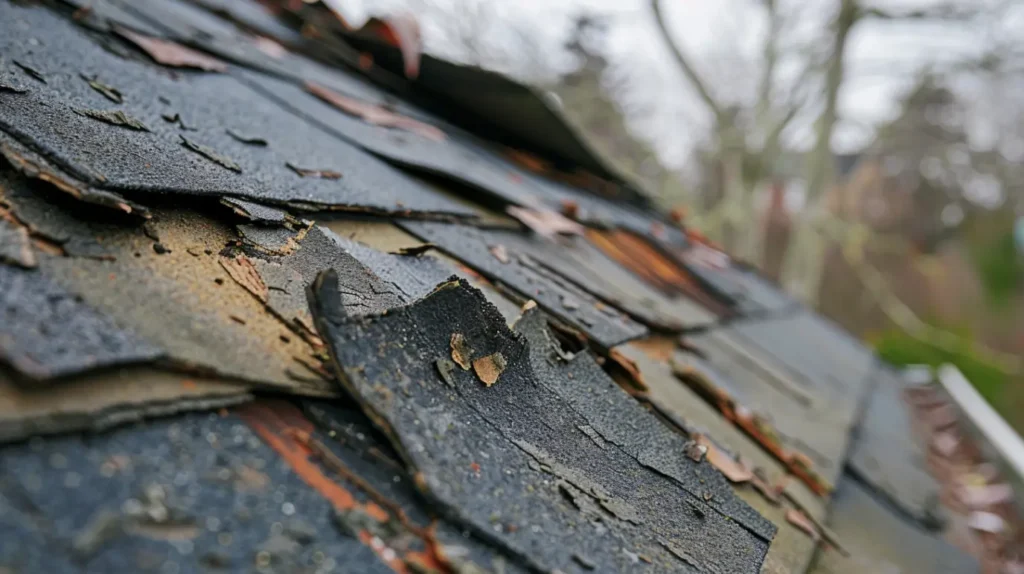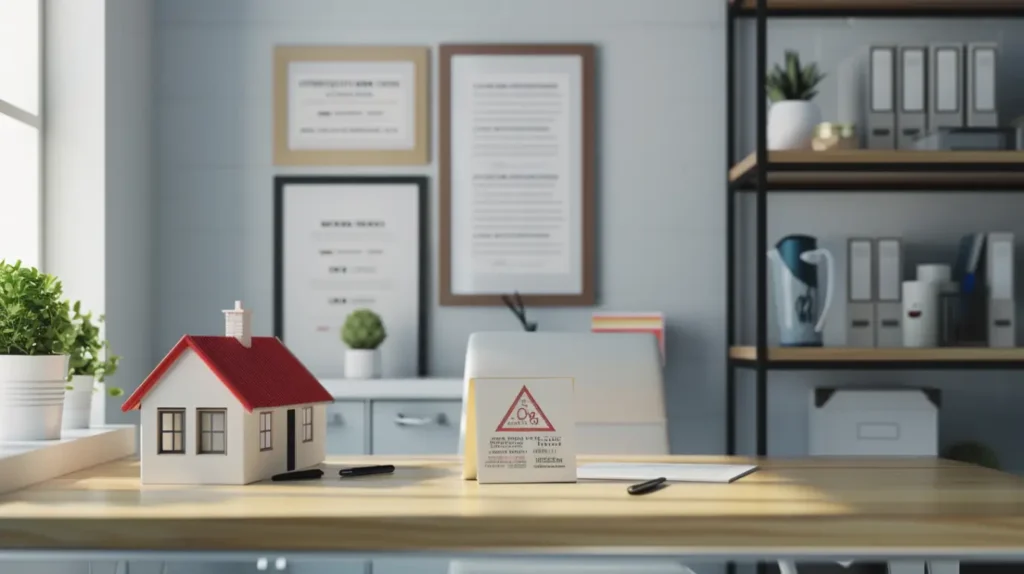When severe weather hits, your roof often bears the brunt of the impact. As a homeowner, it’s crucial to understand how to handle roof storm damage. At KangaRoof, we pride ourselves on providing expert guidance for documenting the damage thoroughly, which is a foundational step in ensuring your insurance claim is processed smoothly. Equipped with the right knowledge, Keller, TX homeowners can rely on KangaRoof to help obtain fair compensation for repairs or replacements under their homeowners insurance. This guide outlines everything you need to know about documenting storm damage effectively, putting you on the right path toward roof restoration after extreme weather with KangaRoof by your side.
Understanding Roof Storm Damage in Keller, TX
Living in Keller, TX means encountering unpredictable weather events that might strain residential and commercial roofs. Hailstorms, high winds, heavy rain, and falling debris often cause considerable roof storm damage, requiring prompt action. Different types of roofs, such as asphalt shingles, metal roofing, or clay tiles, respond uniquely to these conditions, further emphasizing the need for professional evaluation.
Storm damage can go unnoticed initially but lead to significant issues over time. From minor cosmetic dents to structural concerns like leaks, it’s essential to know what you’re dealing with. We’ll now explore common types.
Contact Us

Common Types of Storm Damage Affecting Roofs
High winds can displace shingles, leading to potential leaks and increased vulnerability to water damage. Hailstorms often leave behind dents and granule loss on roofs, diminishing their effectiveness. Additionally, tree limbs can cause visible damage, creating gaps and further wear on the roof’s surface. Understanding the types of roof damage caused by storms is essential for homeowners; it helps in assessing the extent of the damage and aids in the insurance claim process. Proactive identification ensures that necessary repairs are undertaken promptly.
Signs Your Roof Has Suffered Storm Damage
Identifying storm damage on your roof is crucial for maintaining its integrity. Look for visible signs of damage such as the type of damage including missing shingles, dents in metal roofs, granule loss from shingles, and signs of wear. Photos showing wind damage, like missing shingles, can be crucial for documentation. Water stains in your attic or ceilings can indicate leaks, signaling further damage that may not be immediately visible. Additionally, inspect gutters and downspouts for debris or bends caused by heavy winds or falling tree limbs. Recognizing these signs promptly can prevent further deterioration and ensure a smoother insurance claim process.

Why Proper Documentation Matters for Insurance Claims
Effective documentation is key to ensuring your insurance claim process goes smoothly. Insurance companies rely on thorough documentation to assess the extent of roof storm damage and release payouts. Inadequate or hastily compiled records can lead to denied or underpaid claims.
Comprehensive notes, photographs, and supporting documents like weather reports build a strong case for compensation. By taking these proactive steps, you equip your insurance company and public adjuster with all the necessary information to process your claim efficiently.
How Documentation Impacts Your Claim Approval
Thorough documentation is crucial for ensuring a smooth claim process with insurance companies. Comprehensive evidence of roof storm damage, including detailed photos and notes on the extent of the damage, can significantly influence an insurance adjuster’s evaluation. Properly cataloging the types of damage—such as missing shingles or water leaks—reinforces your case and increases the likelihood of favorable insurance payouts. Homeowners who provide in-depth records help insurers make informed decisions regarding coverage, leading to quicker approval of their claims.
Mistakes Homeowners Make When Documenting Damage
Avoid these common documentation pitfalls when filing storm-related roof claims:
- Failing to capture hidden or further through professional inspections.
- Neglecting visible damage on accessories like vents, gutters, and chimneys.
- Overlooking interior issues, such as water stains or sagging ceilings.
- Not contacting the insurance company promptly after the storm event.
Each oversight can lead to delays or denied claims. Instead, enlist professionals like KangaRoof to document damage thoroughly, including photos, detailed notes, and supporting reports. A proactive approach can make all the difference.

Step-by-Step Guide to Documenting Roof Storm Damage
Effectively documenting roof storm requires an organized, step-by-step approach. Start by emphasizing safety precautions during inspections. Capture detailed photos and evidence, ensuring that all damage is adequately recorded.
Engage a certified roofing contractor like KangaRoof to assist in assessing storm impact and compiling records. With proper care and thoroughness, homeowners can streamline the claim submission process, avoid pitfalls, and secure timely compensation from their insurance providers.
Safety Precautions Before Inspection
Safety always comes first before inspecting for storm damage. Start by considering the roofing environment:
- Avoid climbing on the roof if it’s wet or unstable.
- Use a sturdy ladder and non-slip footwear for added support.
- Watch out for hazards like tree limbs or loose shingles that may pose risks.
If your roof type is too steep or the is extensive, it’s safer to call a professional contractor like KangaRoof. Remember, a hasty inspection can cause further or accidents. Always prioritise safety.
Essential Photos and Evidence to Collect
When gathering proof of damage, focus on the following:
- Overall roof structure for wide-angle context.
- Close-ups of damage such as cracks, splits, or missing shingles.
- Evidence of water issues like pooling or roof leak.
- Interior signs: water stains or mold in ceilings or attics.
Using digital tools ensures that photos are time-stamped, a crucial addition when explaining the timeline to insurers. Detailed, high-resolution documentation strengthens your claim significantly.
Get in Touch
Proper documentation of roof storm damage is a critical step that is vital for a successful storm damage insurance coverage claim. Collecting thorough evidence, including photos and notes about the extent of the potential damages, simplifies the process when dealing with home insurance companies. Engaging a professional roofing contractor, especially one with certifications such as OC Preferred, Emerald Premium Plus, or GAF Master Elite, can further strengthen your claim by providing expert insights into the condition of your roof. By taking proactive steps, homeowners can navigate the insurance claim process effectively, ensuring receive the potential insurance payouts needed for repairs or replacement.
Frequently Asked Questions
How does working with KangaRoof help streamline my insurance claim?
KangaRoof simplifies your insurance claim process with expert assessments, comprehensive documentation, and effective collaboration with your insurance company and adjuster. As Keller’s trusted roofing contractor, we ensure no is overlooked, expediting approvals and restoring your roof with unmatched craftsmanship.
When should you not file a roof claim?
Avoid filing a roof claim for minor issues if the cost falls below your home insurance deductible or repairs won’t justify the premium hike. Evaluate the extent of the damage and consult with your insurer for cost-effective decisions.
Read our blog: Should You Replace Your Roof Before Installing Solar Panels?
